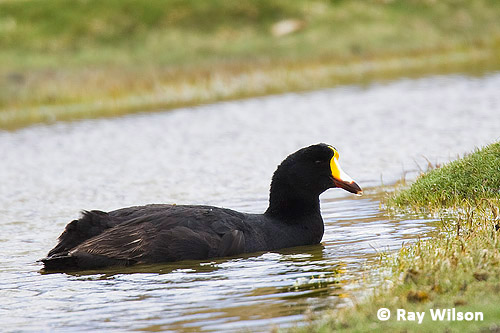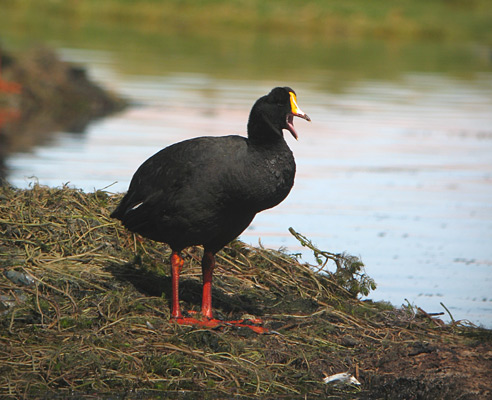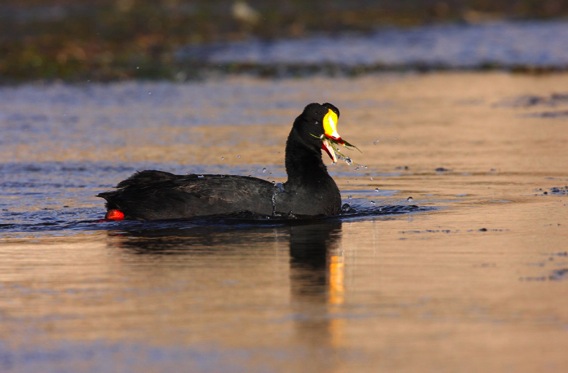
Fulica gigantea
SUBFAMILY
Rallinae
TAXONOMY
Fulcia [sic] gigantea Eydoux & Souleyet, 1841, Peru. Monotypic.
OTHER COMMON NAMES
French: Foulque gйante; German: RiesenblдЯhuhn; Spanish:
Focha gigante.
PHYSICAL CHARACTERISTICS
19–23 in (48–59 cm); 4.5–5.3 lb (2.02–2.4 kg). Heavy-bodied,
with small head and knobs above eyes. Dark slate-gray with
white on undertail-coverts. Bill and shield white, yellow and
red; legs red. Juvenile dark dull gray, with paler underparts and
dark bare parts. Adults normally too heavy to fly.
DISTRIBUTION
Andes of central Peru, Bolivia, north Chile, and northwestern
Argentina.
HABITAT
Ponds and lakes in highlands of puna zone.
BEHAVIOR
Permanently territorial. Quite confident unless persecuted.
FEEDING ECOLOGY AND DIET
Vegetarian, taking mostly aquatic vegetation; also grazes on
shore. Feeds from water surface, up-ends, occasionally dives.
REPRODUCTIVE BIOLOGY
Monogamous. Breeds all year, peaking in winter. Nests in water
c. 3 ft (1 m) deep; nest permanent; of aquatic vegetation,
often resting on bottom of lake and 3 ft (1 m) wide and up to
10 ft (3 m) long at waterline, projecting up to 20 in (50 cm)
above water. Eggs three to seven; young fed until two months
old; fledge at four months.
CONSERVATION STATUS
Locally scarce to common. In 1998 considered Vulnerable in
Chile.
SIGNIFICANCE TO HUMANS
Many eggs are taken by people at some sites.
Photo Gallery of - Giant coot




 Animalia Life
Animalia Life